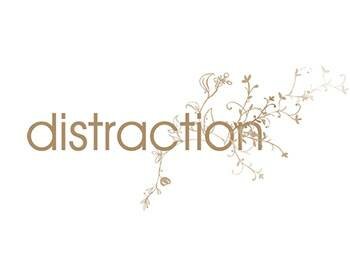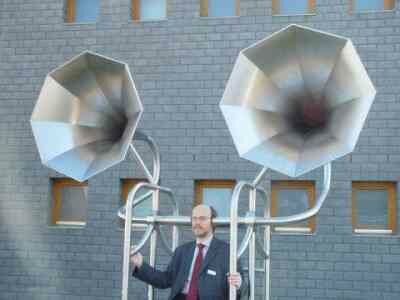Top 10 Ways to Tell if Someone is Lying
Suggested by SMSNot to set out on a low note but there is no definite way to know if someone is lying to you. That’s one of the reasons lie detector tests are not allowed as evidence in court. Every one is different and the signs we can use to detect lies are subject to a lot more then the quality the answer. Even if a persons ‘tells’ do indicate that they are lying, the fact is no tip can ever tell you what they are lying about. They might tell you the truth, for example, but be ‘lying’ about how they feel about it. The items on this list can tell you if someone might be less then truthful, but they will not tell you why, or how. If however you are not dealing with spies on a regular basis, and you are not one to make snap judgments about a person, then there are some ways to guide you about the truth of a story. Here is a list of the top 10 ways to tell if someone is lying to you, (or at least being less than truthful).
10. Left Brain, Right Eye

You may have heard that the two sides of our brain controls different aspects of our thinking. The left-brain essentially controls the rational, or logical side of our thoughts and the information and analysis of what we know. The right side of the brain is the more intuitive, creative side. You can think of it as the Objective, left side, and the Subjective, right side. In a sense lying is an act of creation, sometimes people blend the truth in with a lie, but other times it is entirely fictitious. In either case you use the right side of your brain in order to weave the lie together. Some ‘lie detectors’ in law enforcement agencies suggest that by watching peoples eyes you can get a good sense of which side of the brain they are using. Like most body language eye movement is an unconscious act while you speak, so if you notice a flick of the eyes to the right they may well be using the creative side of their brain in order to form a lie. Of course they could just be coming up with a good way to say it, or trying to make it humorous, but all body language is subject to this kind of multi-layered possibility.
9. Ant’s in his Pants

Someone who is lying will often feel uncomfortable about it, even if they are practiced or used to lying they will likely want out of the conversation as quick as possible. This kind of pressure makes them fidget with their hands and with things around them. They may simply shuffle their feet. Generally a liar will show one or more types of this behavior, depending on the size or seriousness of the lie, as well as their ability to lie effectively. If you know the person well, or even a little, it should be easy to pick up the warning signs and if they play with their hands, move their feet without purpose, or simply start peeling the label a bottle close to hand when they normally don’t they are probably lying.
8. Whining

Liars are more likely to complain. They will moan and whine about things and generally give off a much more negative impression. This is partly because they are uncomfortable and feel miserable, but complaints also have the effect of giving solid opinion and replacing vague unknowns with the impression that the liar is really involved in the story, or their surroundings. It can also be a distraction technique. By complaining they hope not only to ward of undue questioning, ending the conversation early, but also to give their audience the impression of having been effected by the story they are telling.
7. Devils in the Details

The level of detail he or she offers in a story often marks a liar. Many liars will try to be vague and push you off the subject quickly, but more commonly when someone is telling a lie they give you whole wads of detail they wouldn’t ordinarily. So instead of getting annoyed the next time you’re wife insists on telling you about the color and consistency of each stuffed animal at the mall on her way to pick up the laundry, just before she met Edith, but after she saw the man with the one eyed chicken, stop to read some of the other signs on this list. Of course if you are trying to read your wife’s body language like this then you might have more serious problems to address before considering whether or not she has or has not been shopping all day. Also note that a liar is often prone to produce more ‘wild’ elements in their story as they stretch to fill in the gaps between the truths. Hence the one eyed chicken.
6. When it Becomes About You

‘I can not believe you do not trust me!’ When telling a lie a person is normally very uncomfortable. If the story doesn’t make sense, or even if you are simply interested in what they have to say, and you start asking them questions you will often find that it becomes about you. They will get angry, feeling that they are being pressed backwards into their own lie, and start to act out like a troubled 2nd grader. (Someone sticking his or her tongue out at you is also a good way of spotting a lie.) This kind of tell is common when talking to a teenage daughter who swears she was only doing her homework with the girl across the street and that she was home well before her curfew. It is also the last resort a husband when he is not willing to admit he didn’t drive straight home but stopped of at the bar / fast food joint / or betting track.
5. Talking up and Stealing Words

Liars will often use fewer contractions then usual. Making no judgments, Bill Clinton’s famous line ‘I did not have sexual relations with that woman!’ might have been an indication that he was lying since he didn’t say ‘I didn’t have sex with her.’ Talking up is not an uncommon mental tick when telling a lie, but again it must be weighed against the person’s habits. If they tend to use a lot of contractions, as is common with slang and modern ‘text-speak’, then talking without contractions might be a sign they are lying. On the other hand if you are talking to the Queen of England and she says ‘you certainly did not do well’ then you probably just sucked. Similarly if a person repeats a lot of what you say back to them, or uses your own words in answering a question, then it is a good sign they are lying. If you say ‘where did this lipstick come from?’ and they say ‘I do not have a clue where that lipstick came from!’ then they are probably lying. Liars also tend to speed up in order to get it over with as quickly a possible, as well as slurring and fumbling over words because they are busy trying to think of what to say next.
4. Change the Subject

This works two ways. One, a liar will be eager to get off the subject because they fear being uncovered. So if they try to introduce new lines of conversation, drift off topic, or set their hair on fire in order to create a conversation piece, they might just be lying. But there is also another way to use a change of subject to detect a lie. If you suspect someone of lying, then you can change the subject. The more surprising the change of subject the better it is to gauge if someone is lying. So just as they are about to explain what color the tiles in the pet store were, (with their speech slurring and their eyes wandering around the room), try jumping in with something unexpected like, ‘hey, did you see that really big red cloud the other day?’ or possible something a little more plausible like, ‘hey, did you see the game last night?’ A liar is more likely to roll with the change of topic because they will be only to happy to move on, whereas someone who is telling the truth, or at least not wrapped up in trying to misguide you, will likely look at you oddly and try backing away slowly.
3. Taking Cover Behind the Salt-Shaker

Another form of body language that might indicate someone is lying is if they put things between you. If they literally move a physical object in front of themselves it might represent a bridge between you, the audience, and the truth. In short by placing a saltshaker in the middle of the table, (a book or any other object handy), they cerate a physical barrier between themselves and the person they are lying to. Like most tells this is designed to put distance between them so that the lie might have a better chance of working. Obviously this is largely unconscious behavior since no matter how many salt-shakers you hide behind the facts, or fiction, or the story remain the same and reach the audience the same way. But interacting with various innocuous objects around them is a good sign that someone is lying.
2. Say that Again

One of the most commonly used tools in lie detection is asking a person to repeat the information. Police investigators commonly use this when they interrogating a suspect. Often times law enforcement agencies will go over the same information a hundred times to see how well a person can sick to their facts. If there is another person involved this only makes the technique so much stronger because you can see how the two versions differ over time. More importantly in our day to day lives a liar will often add an unusual amount of detail to the story they tell, (see item 7 on this list), which only opens them up further to the technique of asking them questions because there is more to remember while making up other answers.
Asking specific questions is another good way of using this technique because even though a liar will add a great deal of detail to a story, since it is a lie, they will be unable to think up absolutely everything for a ready answer, (because it didn’t happen). The best example of this is when you ask what a person had for dinner when they were at the restaurant, or what their friend had if you want to be really tricky. But it works just as well when you ask other things like, ‘is the road work still on Old Kent road?’ or ‘What color tie was Jim the grocer wearing today?’ This practice can lead to the liar getting angry with you because they feel like they are being interrogated, and they are, but the level of their frustration and the uncertainty of their answers can help you decide if they are lying.
1. Listen…see

Of course all the items on this list are very subjective. If you are talking with someone you know these signs will often be easy to spot since you know what they are ‘usually’ like and the extra body language will show by comparison to what you know of them. But if you don’t know someone that well, then it gets a little harder. More often then not one or more of these tells can occur in the course of every day conversation, and mean nothing. But by paying attention and listing closely it does seem possible to assess a certain degree of honesty. What’s more if you are listening carefully to the person talking they will likely notice the extra scrutiny. This is a great way to put the pressure on someone who is lying. Liars don’t want a persons full attention, (as has been said by they way they will often try to distract and move the conversation), and by actually giving them your full attention the pressure will more clearly show in their behavior. Keep eye contact, listen carefully, and watch them closely. A lot of times this attention alone can be enough to break a liar since a person with a guilty conscious will often mistake it for a judgment in itself.










The only way to tell if someone is lying is…if he or she is not telling the TRUTH
well the how do you know if they are telling you the truth
You can feel it when someone is lieing to you. It's a creepy, cold, sinking, alone, awkward feeling that one, if in close relationship with the creator, recieves and is able to see the truth; that when a person is lieing, they vibrate in a negative way and they will trip down every step listed here. I guess it takes a lier to see lier. " You lie so much you believe yourself, judge not lest ye be judged yourself." Metallica, Holier Than Thou
[...] brains tend to be used more in crafting lies, and they can read subtle emotion clues [...]
Well,by reading this, I have a dilema, somehow secretly I’m planning to find out real deal,even if I have2play a detective for a while! My only problem is that soon as I find out something,I’m boiling and it burst out n I start accusing! Mayb motto gotta b,keep all2urself till u have 80% of prove!! Would ppl try to maneuver with lies into ur life and try to steal from you,live of of u,take but give nothing in return,just some bad ass company,or do u trust some1 who don’t build things in life? How to make a un trusty person feel guilt and change their ways toward u,being nice and calm person,or be ignoring them and have bitchy attitude and make them pay by not having me/you around? Coz if we are important to a person they will ask why sudden change in ur behavior and y u refuse to speak to me….hope I b strong and don’t let fake ppl be around me and make my way to the top of my castle!where me and my beautiful intelligence reside! I think I’m close,but its many barriers,like love,missing,loneliness,loss,happiness,some of them eam that they are good and shouldn’t b a barriers,but to me its tricky,sometimes all is temporary….bx,ny
Placebo Effect Antidepressants
Top 10 Ways to Tell if Someone is Lying